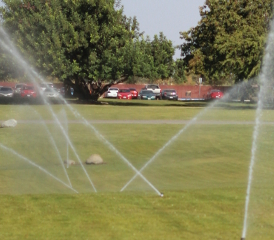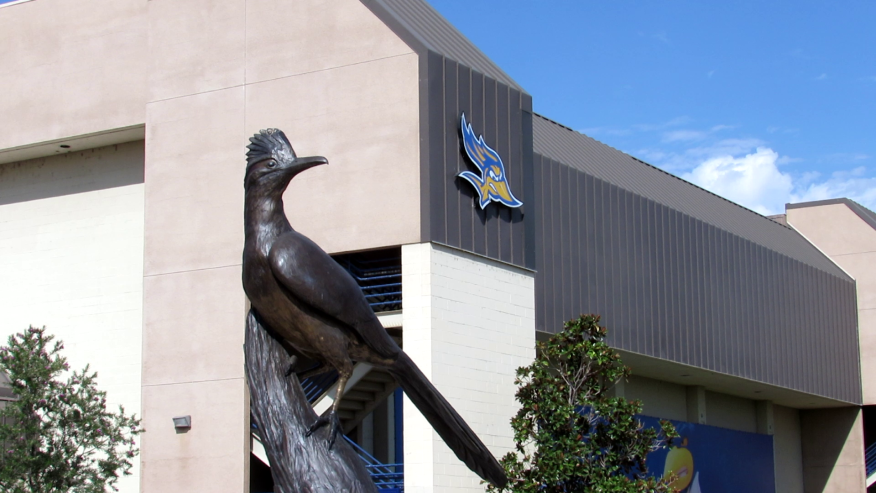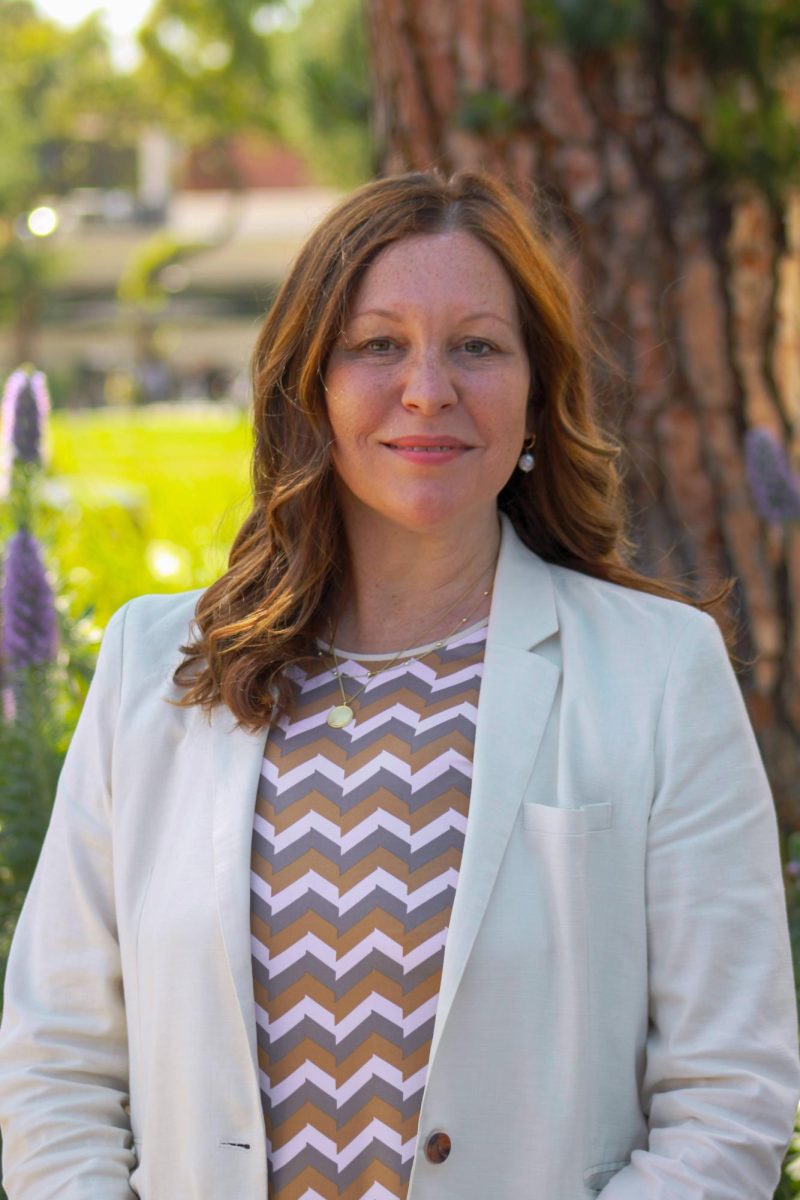By Myra Maldonado
Staff Writer

Runoff water from CSUB’s sprinkler system is shown near the Walter Stiern Library
How much water do we use as a campus as a whole on a daily basis? According to Pat Jacobs, Assistant Vice President of Facilities Management, the amount of water used on campus on a daily basis varies from season to season. In Bakersfield, there are basically two seasons: summer and winter.
During the summer months the use of water is very high, but that is because the weather is much warmer here in the valley than in most places. Jacobs said that on average during the summer, 139,000 cubic feet of water is used per day. There are about 7 ½ gallons in a cubic foot, making the water use on campus during the summer slightly more than one million gallons per day.
There are a couple reasons why it is so high during this season. One is because facilities irrigates the entire campus. Imagine every plant and shrub on campus has to be watered regularly. There is no off time during the summer. Another reason, is that it takes water to run the air conditioner units on campus. Without the water flow, there is no air conditioner.

Runoff water from CSUB’s sprinkler system near Parking Lot K makes the sidewalk unable to use.
The average water bill during the summer season is $40,000 and in the winter $6,000. During the winter months, water use is significantly less. On average, the usage is about 20,000 cubic feet of water or about 150,000 gallons. Throughout the winter season, the air conditioner uses less water and the irrigation almost stops completely on the entire campus, during the winter months. According to Jacobs, starting in the beginning of December there is no irrigation, except for the baseball, softball and soccer fields due to the watering of the winter rye.
Jacobs said because of the size of the campus, the watering system is set up to water all day. On average it runs 20 hours per day/seven days a week. The irrigation system is set on electric timers that are run by a computer. For example, the lowest water pressure is from 3 a.m. to 6 a.m. so not having a lot of water pressure, makes irrigation difficult. So at this time, only certain areas are watered. Most watering must be done during the day, and Jacobs said it’s not by choice, but due to the size of campus in order to water all grassy areas.
Regarding water waste, the irrigation has what is called, a transpo evaporation rate. This rate will detect whether more or less water is needed in an area where plant roots may be dry due to the hot climate. It depends on the weather. For example, these weather stations measure the temperature and adjust the amount of water and time the sprinklers run, according to the transpo evaporation rate.

Runoff water from CSUB’s sprinkler system is shown near the Walter Stiern Library
Jacobs said the system is not perfect and has malfunctioned. Being that the campus is so large, he said that it takes 36 clocks, each has 15 to 18 stations, which equals to thousands of sprinkler heads. Each sprinkler has been placed differently according to the shape of the area it is watering.
Jacobs said that if any student on campus sees a broken sprinkler, an overflow of water, or has any concern about the water irrigation on campus, they can call his office with the location and time of the malfunctioning sprinkler, etc. at (661) 654-2211.













